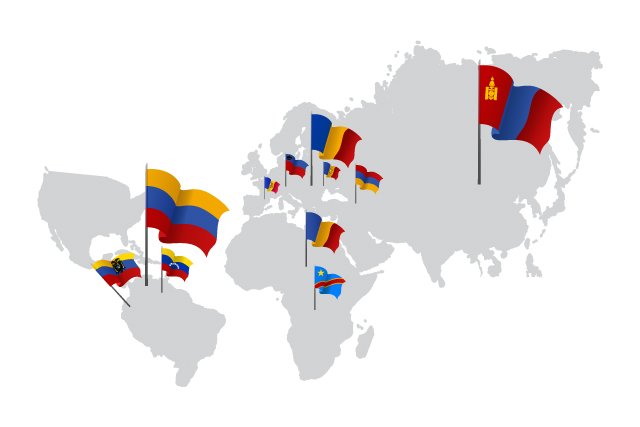
Flags serve as powerful symbols that represent the identity, history, and values of a country. Each element, from the colors to the design, carries significant meaning. In this blog post, we will delve into the symbolism and meaning behind the flags of several countries that share the common colors of blue, yellow, and red in their flag.
blue, yellow, and red Flags – Symbolism and Meaning
Colors have long been used as symbols to convey ideas and feelings. Blue, Yellow, and Red hold different meanings in colorful societies and surroundings. Let’s explore the symbolism and significance of each color. Also, Discover our comprehensive guide to countries featuring flags in black, red, and yellow.
Blue: Sky and Freedom: Blue often symbolizes the vast sky, representing freedom, aspirations, and the limitless potential of a nation.Peace and Tranquility: It is frequently associated with peace, stability, and the calmness of a society.
Yellow: Sun and Prosperity: Yellow is commonly associated with the sun, symbolizing warmth, energy, and the prosperity of a nation.Wealth and Abundance: It often signifies wealth, abundance, and the richness of a country’s resources.
Red: Courage and Valor: Red is often linked to qualities such as courage, valor, and the willingness of a nation’s people to make sacrifices. Bloodshed and Struggle: It can represent the blood spilled in the struggles for independence or in defense of the homeland.
Blue, Yellow, and Red Together in Flags
The combination of blue, yellow, and red in a single flag creates a harmonious visual representation of a country’s values. The juxtaposition of these colors often tells a unique story about the nation’s history, culture, and aspirations. The careful arrangement of these colors can create a sense of balance and unity, contributing to the overall impact and recognition of the flag on the global stage.
Countries with Blue, Yellow, and Red Flags
Now, let’s explore several countries that incorporate the colors blue, yellow, and red into their public flags, showcasing the different interpretations of these colors.
1. Chad
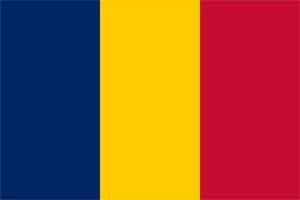
- Flag Description: Chad’s flag consists of three vertical stripes of blue, yellow, and red. The blue symbolizes the sky and hope, the yellow represents the sun and desert, and the red signifies progress and unity.
- Meaning: Chad’s flag embodies the aspirations and unity of its people, reflecting the nation’s geographical and cultural diversity.
- Time of Adoption: The current flag was adopted on November 6, 1959, upon gaining independence from France.
2. Armenia
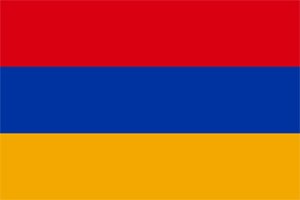
- Flag Description: Armenia’s flag features three horizontal stripes of red, blue, and orange. The red represents the Armenian Highland, the blue symbolizes the sky, and the orange signifies the courage of the people.
- Meaning: Armenia’s flag carries deep historical and cultural significance, reflecting the nation’s resilience and determination.
- Time of Adoption: The current flag was officially adopted on August 24, 1990, following the country’s declaration of independence.
3. Colombia
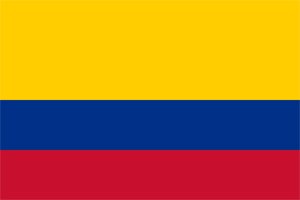
- Flag Description: Colombia’s flag consists of horizontal stripes of yellow, blue, and red. The yellow symbolizes wealth, the blue represents the seas and skies, and the red signifies the bloodshed for independence.
- Meaning: Colombia’s flag reflects its rich natural resources, patriotism, and the struggles endured during its fight for independence.
- Time of Adoption: The current flag was adopted on November 26, 1861, with slight modifications in 1934.
4. Congo, DR
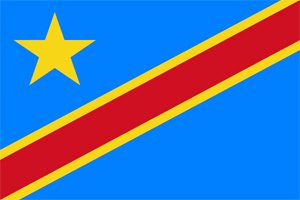
- Flag Description: The Democratic Republic of the Congo’s flag features a sky blue field with a diagonal red stripe and a yellow-bordered star in the upper left corner.
- Meaning: The blue represents peace, the red symbolizes the blood of martyrs, and the yellow star stands for unity.
- Time of Adoption: The current flag was adopted on February 20, 2006, following the end of the Second Congo War.
5. Mongolia
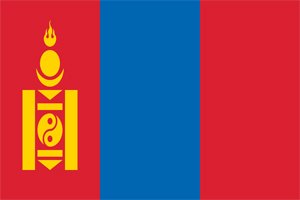
- Flag Description: Mongolia’s flag consists of vertical stripes of red, blue, and red. The soyombo symbol, a national emblem, is featured in the left stripe.
- Meaning: The red represents strength and courage, while the blue signifies the eternal blue sky. The soyombo embodies the independence and freedom of Mongolia.
- Time of Adoption: The current flag was officially adopted on February 12, 1992, after the democratic revolution.
6. Romania

- Flag Description: Romania’s flag consists of vertical stripes of blue, yellow, and red. The colors are arranged from left to right in that order.
- Meaning: The blue represents freedom, the yellow symbolizes justice, and the red signifies fraternity.
- Time of Adoption: The current flag was officially adopted on December 27, 1989, following the Romanian Revolution.
7. Andorra

- Flag Description: Andorra’s flag features three vertical stripes of blue, yellow, and red.
- Meaning: The colors are said to represent the protection offered by Andorra’s patrons: blue for France, red for Spain, and yellow for the papacy.
- Time of Adoption: The current flag was adopted in 1866, and its design has remained relatively unchanged.
8. Ecuador
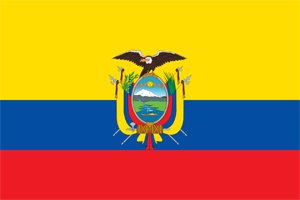
- Flag Description: Ecuador’s flag consists of horizontal stripes of yellow, blue, and red. The colors are arranged in that order.
- Meaning: The yellow symbolizes fertility and wealth, the blue represents the sky and sea, and the red signifies the blood shed for independence.
- Time of Adoption: The current flag was officially adopted on September 26, 1860, with modifications in 1900.
9. Moldova

- Flag Description: Moldova’s flag consists of vertical stripes of blue, yellow, and red.
- Meaning: The blue represents the sky, the yellow symbolizes the fields of wheat, and the red signifies the victory in the struggle for independence.
- Time of Adoption: The current flag was officially adopted on May 12, 1990, after gaining independence from the Soviet Union.
10. Liechtenstein

- Flag Description: Liechtenstein’s flag features two horizontal bands of blue and red with a gold crown in the upper hoist-side corner.
- Meaning: The blue and red colors are traditional heraldic colors, while the crown symbolizes the principality’s sovereignty.
- Time of Adoption: The current flag was adopted on June 24, 1937, and the design has remained unchanged since then.
11. Venezuela
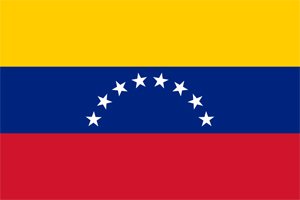
- Flag Description: Venezuela’s flag consists of horizontal stripes of yellow, blue, and red. The colors are arranged in that order.
- Meaning: The yellow represents wealth, the blue symbolizes the Atlantic Ocean and the Caribbean Sea, and the red signifies the blood spilled for independence.
- Time of Adoption: The current flag was officially adopted on March 12, 2006, with modifications to the coat of arms.
Read More: Countries with blue and yellow flag
Conclusion
The flags of these countries, with blue, yellow, and red colors, showcase a rich tapestry of history, culture, and symbolism. Understanding the meanings behind each flag adds depth to our appreciation of the diverse nations that share these common colors. Flags, in essence, are more than just pieces of fabric; they are emblematic of the spirit and identity of a nation. Also, Discover a diverse array of nations boasting flags in striking Blue and White hues with our comprehensive guide.








